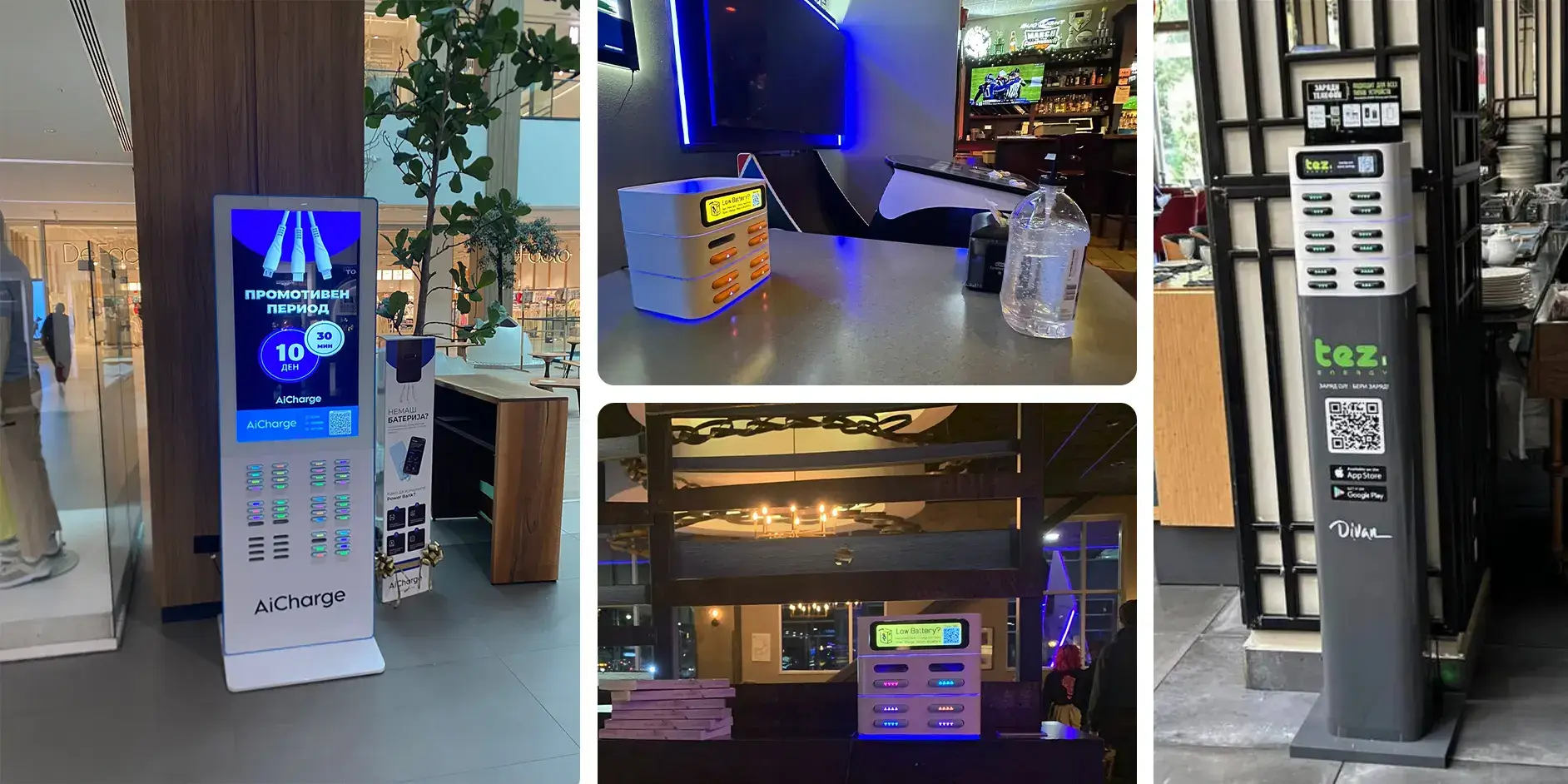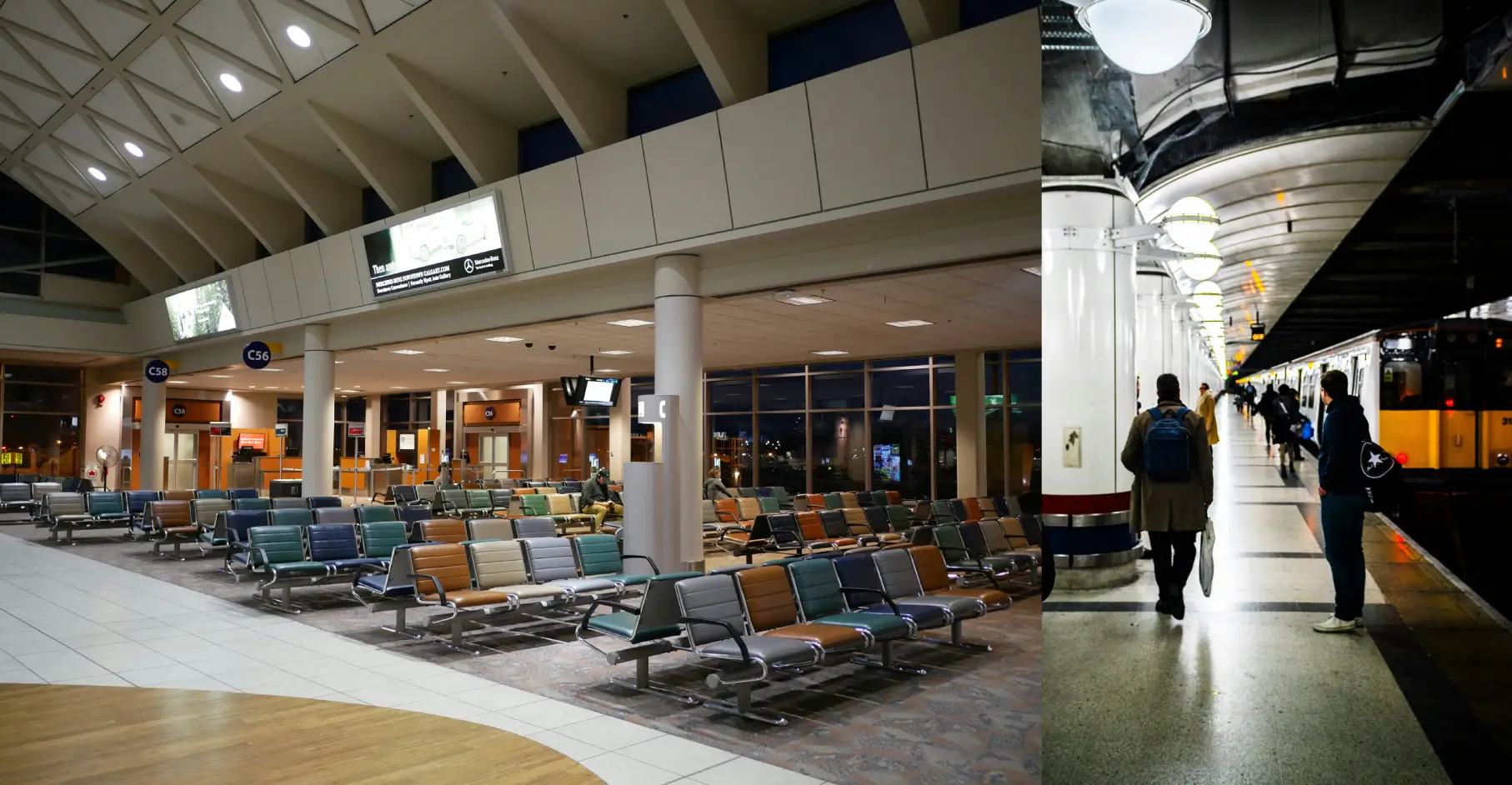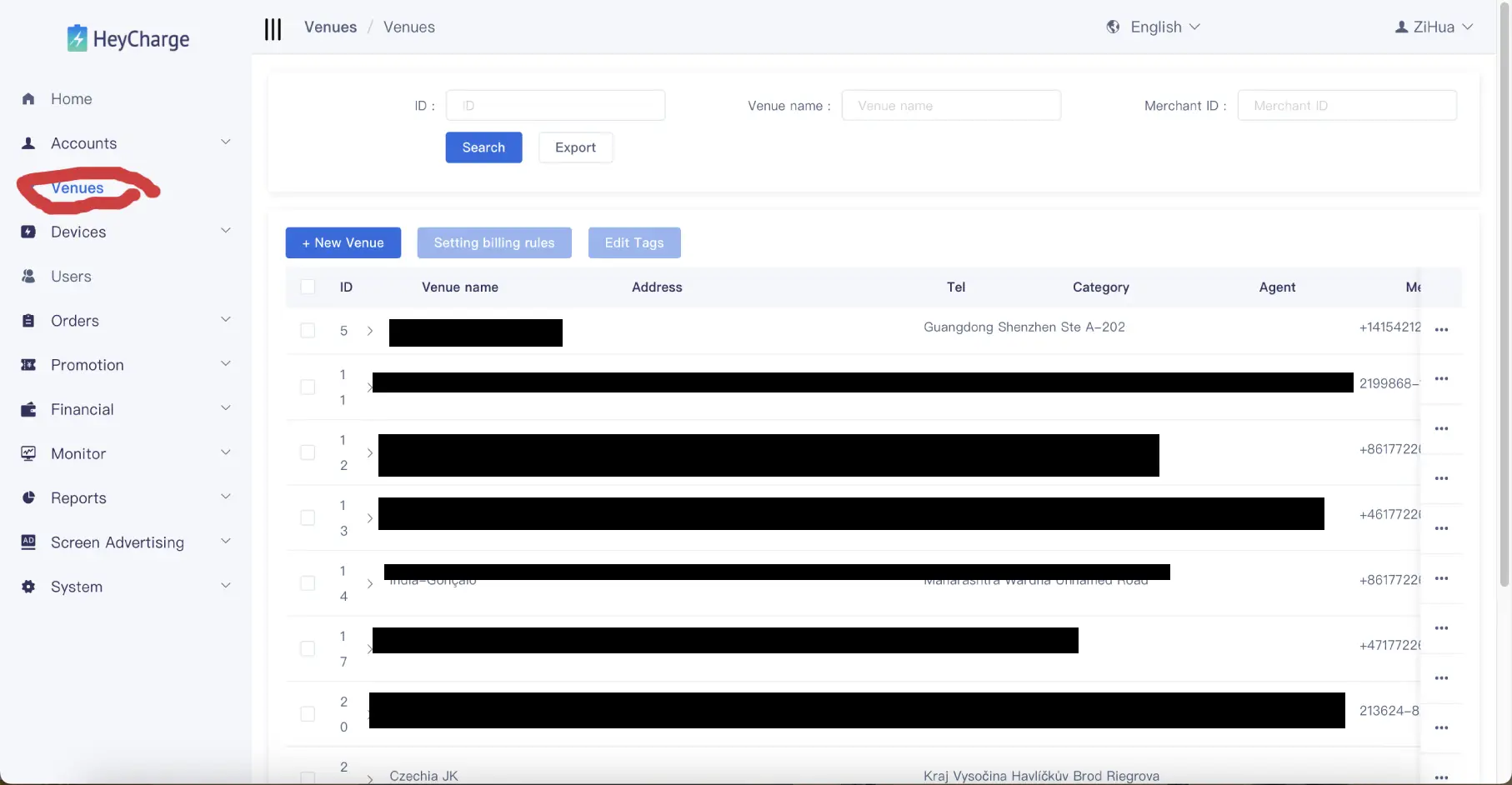The shift from carrying portable power bank to renting power bank at stations has also been popular for a long time. And with the smartphones and other portable devices increasing rapidly, many business owners of power bank rental business might have more things to consider when it comes to finding the suitable power bank rental locations to place.
Whether you are a small business owner, or want to enter the power bank sharing business market, you’ll need to think about how to place effective and gain the most profitable. Here, HeyCharge solution explains the full business guide of power bank station placement.
Table of Contents
Top 4 Factors to Consider for Power Bank Placement
Have you noticed a fascinating trend? The placement of a power bank sharing station can significantly impact its usage and popularity. For business owners, it’s crucial to prioritize the following four key factors: foot traffic, consumer dwell time, charging demand, and rental costs.
By carefully analyzing these elements, you can optimize your station’s performance and maximize its business potential. Remember, a well-chosen location is essential for the success of your power bank sharing venture!
How to Choose Venues for Power Bank Rentals
There are a number of venues we can place. We always consider when people are shopping, travelling or calling, in such scenarios that people have high demand on the sharing power bank. Imaging that there is a power bank sharing station, and people can get phone powered on. However, we can’t choose the place casually.
1. Malls and Shopping Centers
Malls and shopping centers are the places where people gather and where they are most likely to consume the power of their cell phones while shopping. If we put power bank rental stations in malls and shopping centers, not only can it be convenient for people to charge in time, but also can increase the usage rate of power bank.
Pros
- Easily placed near stores, food courts, or entrances for maximum visibility.
- High footfall translates to high usage rates.
Cons
- Rental costs for space can be expensive.
- May require permissions and adherence to mall-specific regulations.

2. Transportation Hubs
Whether it’s a short trip or a long trip, people like to have a rechargeable battery ready, and even some train stations and airports will prepare free charging stations for everyone. However, regarding free charging, you may not always be able to wait for a free charge even if you queue up politely. People who travel short distances usually like to travel light. Long-distance travelers often tend to have their cell phones and rechargeable batteries running out fast even before they almost reach their destinations.
Pros
- High turnover of users ensures consistent demand.
- Strategic locations like waiting areas or boarding gates maximize convenience.
Cons
- Placement costs can be high due to competition for prime spots.
- Security and maintenance requirements may increase operational complexity.

3. Tourist Attractions
Tourist attractions are hotspots for phone usage as people take photos and browse when traveling, navigate maps, or share their experiences online. If we put power bank rental station in scenic spots and tourist attractions, we can make it more convenient for tourists to use their cell phones and improve their travel experience.
Pros
- Enhances visitor satisfaction by solving a critical need.
- High potential for seasonal surges in demand.
Cons
- Placement might need collaboration with local authorities.
- Seasonal fluctuations could impact consistent revenue.
4. Cafes and Restaurants
Pros
- Encourages customers to spend more time at the venue.
- Small spaces make it easier to manage machine installation and maintenance.
Cons
- Limited user flow compared to larger venues like malls.
- Space constraints might limit station size or placement options.
5. Universities and Campuses
Educational institutions are home to students who rely heavily on devices for studying, attending online classes, or socializing.
Pros
- Consistent demand from students and staff.
- Builds brand awareness among a tech-savvy audience.
Cons
- Revenue may dip during vacations or off-semester periods.
- Placement might require university administration’s approval.
How to Evaluate the Profitability of Power Bank Rental Locations
Venue selection for power bank rentals is crucial for maximizing profitability. To measure profitability, it’s not an easy thing as this market should consider many factors. We deliver a straightforward calculation model, it can assist in assessing the potential revenue and return on investment for a specific venue. Below is a guide on how to evaluate placement effectively.
Revenue Calculation Formula
Monthly Revenue = (Daily Rentals * Rental Price * Rental Price * Active Days) – Venue Rent – Operational Costs
Key Variables to Consider
Daily Rentals
- Determined by venue foot traffic, user conversion rate (the proportion of people likely to use the service), and the usage frequency per device.
- Example: In high-traffic areas such as shopping malls, conversion rates typically range from 20% to 30%, with each power bank used 3-5 times daily.
Rental Price
- Average fee per transaction, usually between $1 and $5, depending on local market conditions and user preferences.
Active Days
- Number of operational days in a month, generally 30 minus any downtime due to maintenance or other factors.
Venue Rent and Operational Costs
- Rent varies by location type; high-traffic areas (e.g., airports) often have higher costs. Operational costs include electricity, internet, and maintenance, typically $20-$50 per machine monthly.
Example: Shopping Mall Placement
Venue Data:
Daily foot traffic: 10,000 people; conversion rate: 20%; rental price: $3 per session.
Costs:
Monthly venue rent: $800; operational costs: $50.
Calculation:
Daily rentals: 10,000×20%=2,000; assuming 5 rentals per device per day: 2,000÷5=400 rentals.
Monthly revenue: 400 × $3 × 30 – $800 – $50 = $35,150.
Optimizing Placement Decisions
Seasonal Traffic Adjustments:
Predict higher demand during holidays or peak seasons in tourist areas.
Risk Analysis:
Compare conservative (lower foot traffic), neutral (average traffic), and optimistic (high traffic) scenarios to evaluate profitability across different conditions.
Automation Tools:
Use tools like Excel or online calculators to input variables and automate projections.
This model helps business owners make informed decisions about location investments, ensuring a balance between profitability and operational efficiency.
How to Effectively Manage Your Power Bank Rental Locations
Leveraging some productivity tool can bring about positive changes within your business, especially when you have many power bank stations. You should pay more time to scale your business instead of check station status one by one. With that being said, you need to make full use of HeyCharge power bank sharing admin system. This system is capable of checking each station status, rental status.
The Pros of HeyCharge Admin System
- Monitor and notify the station status, quickly react on which is abnormal, rent failure.
- Show real-time network connectivity, power level, power bank temperature, slot availability, power bank condition, battery health (SoH), and cable status.
- Data reports help you get more actionable insights to increase your rental conversion rates.
- Check venue performance, optimize your site selection.

Work with HeyCharge
If you want to make much money in this power bank sharing industry, it is vital to have a reasonable station venue placement. You can use the calculation mode to evaluate how profitability you will earn at one venue. Plus, don’t hesitate whether you should start this business, work with a smart partner, you can get more insight on the power bank rental stations.
If you found this page useful, check out our power bank sharing business website for more details, products and expert advice.
Disclaimer
The figures and projections provided are based on hypothetical scenarios and should be used as a guideline. Actual performance may vary depending on location, market conditions, and external factors. Users should conduct thorough market research and consult with local experts before making business decisions.



